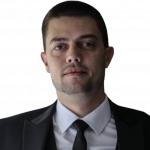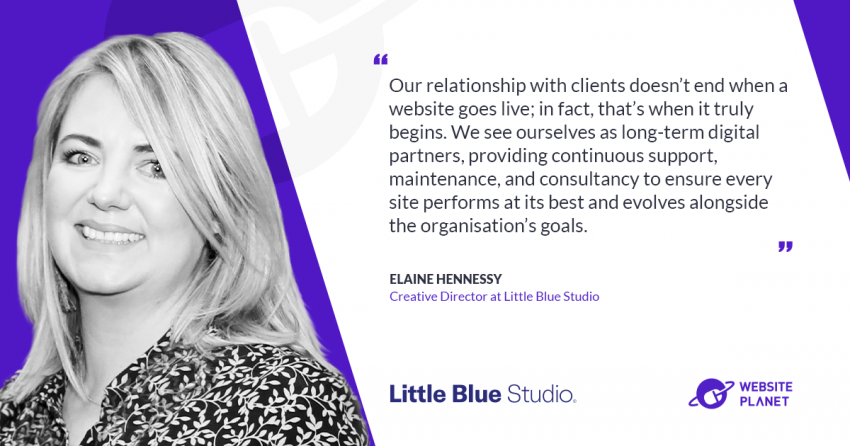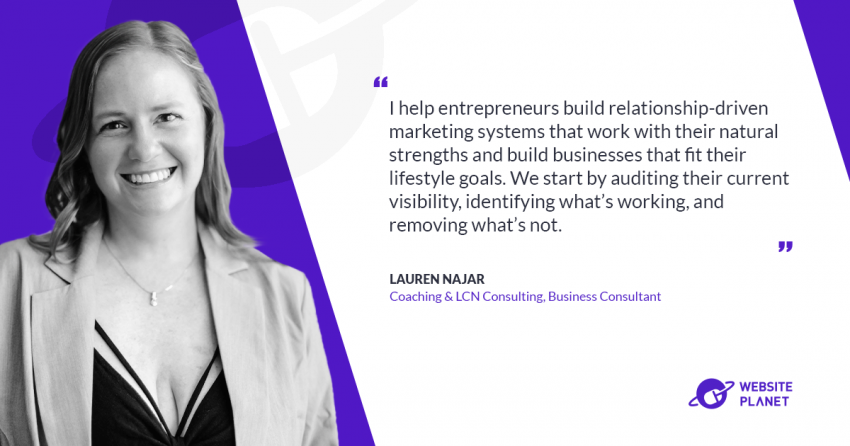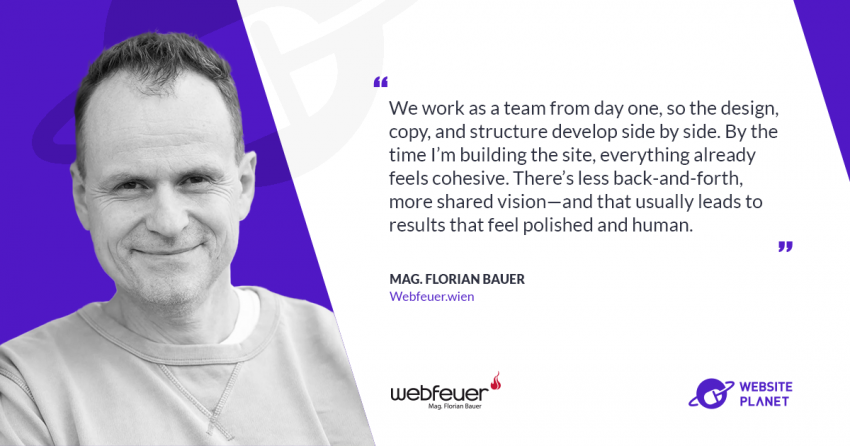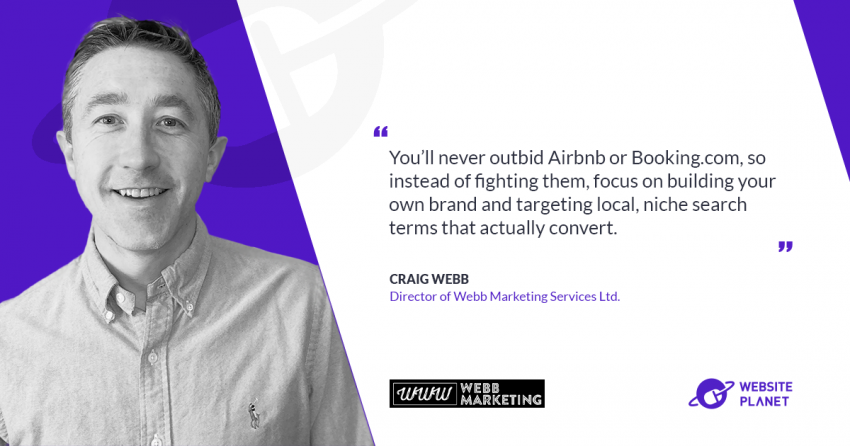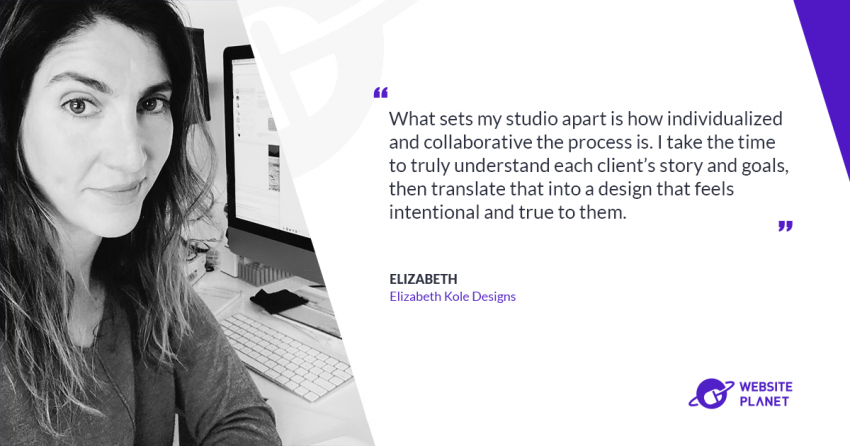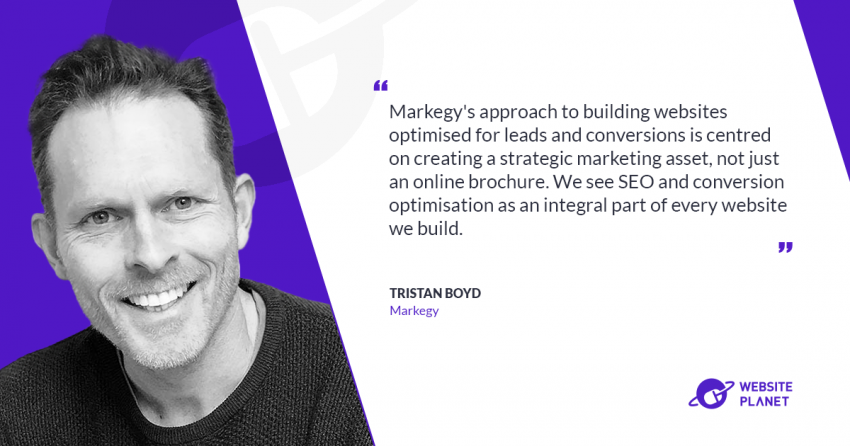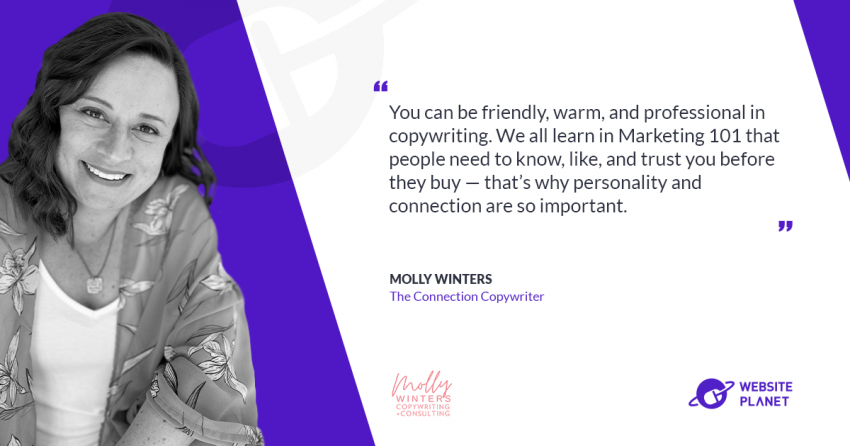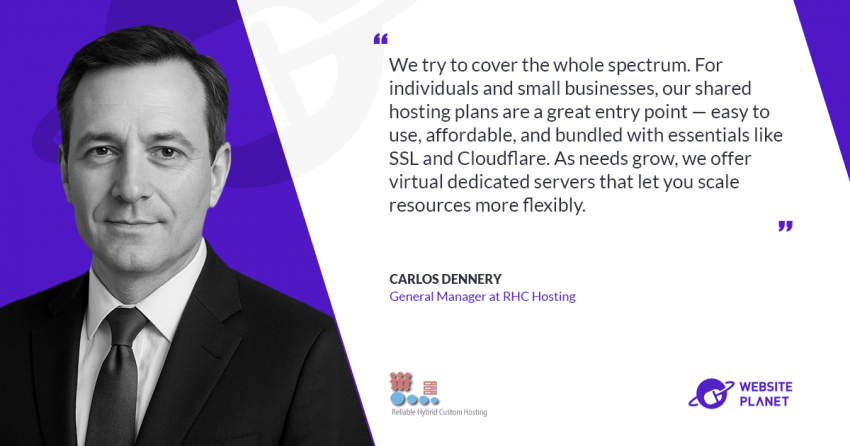Behind every successful software project, there is the dedication and expertise of many team members. That dedication and expertise, however, aren’t always immediately apparent — unlike developers, whose work is instantly recognizable, project managers often operate out of the spotlight. Still, when project management is not treated with the level of attention it deserves, the negative outcomes will come out sooner rather than later.
In a world of increasingly complex software solutions and grueling competition in the market, competent project management is as important as technical proficiency. We sat down with Bruce Mason, QArea’s Head of Delivery, to talk about effective communication between the client and the team, success factors for projects of all scales, and going above and beyond customer expectations. Website Planet has the pleasure.
Describe your process for understanding specific business needs and translating them into technical requirements for a software development project.
Translating business needs into something that a project team can use to ensure progress can take many approaches, but is critical for the successful delivery of the project. The output of this process ensures a shared understanding with the project team, as well as the key stakeholders on the project, of what is required and how it will be delivered.
Our process of turning business requirements into technical details can be broken down into four stages:
- Business discovery and understanding the context. The team will start by talking to key stakeholders about their business goals, challenges, and expectations. However, during this process, it is vital to ensure that there is one person from the client side who will act as a decision-maker, where necessary, on behalf of their business. This will ensure that when there are conflicting interests, they will arbitrate in the best interests of the whole organization. Although it is a good idea to talk with different departments that have an interest in the product to better understand current processes, challenges, and potential inefficiencies, this should be tempered with the previous point that it may create conflicting ideas. Moreover, while the team works with the client to understand their business needs, they also need to use their experience to consider industry standards.
- Requirement definition and translation. Once the business needs are clearly defined, the team will create a backlog, defining business needs at a high level (also known as epics), at a medium level (also known as features), and at a low level (also known as user stories). Each feature will have many user stories, and each epic will have many features. This approach provides a mechanism for ensuring all the business needs are delivered by making sure that all of the respective parts are completed throughout the project. All of that is commonly defined as functional requirements. However, in addition to this, the team will also define non-functional requirements, which will define the standards that the system must comply with, such as performance, security, scalability, etc.
- Validation and refinement. I firmly believe that it is a good idea to validate assumptions early in the development process. This can be achieved through workshops, prototypes, or proof-of-concept demos, depending on the scale and objectives of the project. With this, we make sure that our understanding of the project fully aligns with business expectations. As I mentioned earlier, there should be a key stakeholder from the client side. This person, along with support from the project team, should liaise with the other stakeholders to ensure that the backlog is prioritized regularly. This ensures that the project team’s focus is on delivering the work that provides the most value for the client. Plus, regular feedback helps prevent costly rework down the line by enabling ongoing course corrections.
- Iterative process. The project team will review the backlog with the client and agree to move forward with user stories in the next tranche of work. The project team will review the items and ensure they have a common understanding with the client, and then progress the work. At the end of the work, the functionality that has been completed is demonstrated to the client and signed off. Additionally, as part of the review, the stakeholders may agree on enhancements or corrections to the functionality, which are then added to the backlog.
- Documentation and handover. After each sprint cycle, the client must decide whether to release it to the live environment. In addition to functional requirements, extra documentation may be needed. If the client manages live support, the project team must document the release process, system monitoring, and logging. Release notes should also be in place to inform end users of changes. If a formal governance model is used, release planning may be required, including rollback options and risk assessments for approval.
Beyond technical skills, what criteria do you use to select and assign team members to a project?
Setting up a team for the project is a crucial task that determines everything about it, from how efficient the process is to how much everyone enjoys working on the project. Assigning team members to projects is something that I have been doing for 20+ years, and this is the criteria that help me make the right decisions:
- How well they align with the project needs. I try to focus on selecting team members whose experience and working style match the client’s expectations.
- How good they are at problem-solving and adaptability. Software development projects don’t always go as planned, so critical thinking and adaptability become crucial success factors.
- How developed their communication and collaboration skills are. Clear communication is integral, especially in outsourcing or distributed teams. I’m looking for team members who can both articulate their thoughts well and ask the right questions.
- Whether they have a sense of ownership and accountability. I prefer working with people who don’t just wait for instructions but can take initiative and follow through on their commitments. Plus, where team members work directly with stakeholders, we need them to ensure that they understand that sometimes the needs of the project are more important than the needs of an individual stakeholder that they work with.
- How good their domain knowledge is. While technical expertise is a given, domain knowledge is different: understanding the business context of the project allows developers to effectively tackle industry-specific challenges and user expectations.
- How well they fit the team culture and internal dynamics. The best teams are built not just on technical skill but on how well team members can work together. Here, I pay attention to personality traits, work ethic, and the candidate’s previous record.
What approach do you use for communication and reporting throughout the software development process?
My approach combines structured reporting with adapting our procedures to the client’s preferences. Many clients prefer detailed reports and regular meetings, while others want more concise updates paired with direct access to the team. My ultimate goal here is to ensure transparency without overwhelming the stakeholders with unnecessary details.
On every project, we try to establish a regular schedule for communication both internally and externally. These are defined in a communications plan that is agreed upon with the client and the project team. To me, proactive communication is key — updating the clients on the progress, blockers, risks, and next project steps enables us to identify and resolve challenges before they affect the goals of the project. It is worth reiterating that effective communication is the responsibility of all members of the project, both from the team and the client. Sometimes there is a need to review the state of the project and ensure that its needs are put above those of the individual to achieve the common goal.
The above is true for scheduled reporting. For day-to-day communication, I always encourage direct contact between developers, testers, and product owners via Slack, Teams, or other collaboration tools. This speeds up defect resolution and prevents misunderstandings. All members of the project team should feel empowered that they are able to progress their work with the collective support of the project team within the agreed approach that is defined in the communication plan and project plan. We also like to use dashboards and structured reports to better visualize the progress of the project.
How do you handle change management during a project and how do you communicate those impacts to the team and the client?
In project development, change management is inevitable, but it needs to be handled in a clear and transparent way that has been agreed with the client and the project team prior to the start of the project, and defined in the change management section of the project plan. It should be remembered that no two projects, as with no two clients, are the same, and therefore the change management approach needs to be tailored to their specific needs.
The first thing to remember about change management is that while all change requests will be impact-assessed, not all change requests will be implemented, as they need to be approved by an agreed person from the client. It is also essential to ensure that all of the change management requests are kept together with the rest of the project documentation for review. Each change request will be reviewed by the required project team members and discussed with the collective project team, to assess the impact it will have on time, cost, and quality. Once this is completed, the change request and its impact assessment will be reviewed with the client to decide if it will be added to the project scope or rejected.
In some instances, the project team may receive informal change requests that have not come through the agreed channels. These have many names, but the most common is scope creep. In case this occurs, the stakeholder requesting the change should be politely reminded of the agreed approach and the need to protect the project. Sometimes, this may need to be enforced through escalation.
Can you provide examples of projects where you successfully delivered outstanding results for clients and what were the key factors that contributed to that success?
Having worked in software development and testing for over 23 years, we have collaborated with hundreds of clients on countless exciting, technically challenging projects. One recent project, however, stands out. Initially, we were hired by the client, a company specializing in B2B software, for a one-off testing project. Since then, we have worked together on 10 different projects across multiple product lines and helped launch major updates for products that thousands of companies across the world know and trust.
There are several factors that helped us take our working relationship with the client to where it is today.
First, we are able to start projects fast and implement ongoing change control within the agreed approach that meets the client’s expectations.
Second, our team’s QA expertise paired with strong leadership from the management team ensured that all tasks were completed according to time, quality, and budget expectations, and only aesthetic issues or change control were identified after completion.
However, the key success factor here, in my opinion, is our core belief in product ownership and always going the extra mile for our customers. Instead of just executing test cases, we took a different approach, where we proactively collaborated with them in a partnership to suggest improvements based on industry standards and identified additional risks to be mitigated as the scope changed. This approach cannot be used for every single client, as some have their own internal approaches that need to be followed based on their corporate standards. Still, for this client, it worked to effectively ensure that the organization maximized the value they got as part of the engagement.
Discover more successful projects: qarea.com/projects
How do you stay up-to-date with the latest technologies and trends in software development?
For me, staying up-to-date with the latest developments in software is a combination of hands-on experience, continuous learning, and engaging with the industry I’m in. Even though I don’t personally code, being involved in various projects and getting to experiment with different tools, technologies, and frameworks helps me better understand how to tackle both typical and unique challenges. Internal knowledge-sharing sessions, where developers and architects present new technologies and lessons learned from other projects, also help a lot.
Of course, a large chunk of my learning happens online — I follow several opinion leaders on LinkedIn, regularly visit sites like InfoQ, frequently review reports from Gartner, McKinsey, and Forrester, and remain an active member of Stack Overflow, as well as a few Reddit and LinkedIn communities for developers and testers.
When I want to go above what’s available online, I attend industry conferences — those present not just the latest technology and business trends, but also some great networking opportunities, so I’m planning to attend even more this year. Finally, webinars are among some of the most effective ways to bridge the knowledge gaps, so I make sure to listen to as many as I can. In fact, I’ve come to view webinars as possibly the best knowledge-sharing format available today, and, coincidentally, we have recently launched a series of webinars at QArea.
What is your pricing model and how transparent are you about your costs?
At QArea, we stand by the principles of complete transparency and maximum flexibility in every aspect of our work. This is why we offer four different pricing models that are well-suited to different types of projects:
- Fixed Cost is the perfect choice for smaller projects, especially in quality assurance. As long as there are clearly defined requirements, the predictability of this model is unmatched, both in deliverables and in budget.
- Time and Material is usually the model we recommend for exploratory projects, where the scope of tasks can change from week to week. This is also the ideal model for projects with a need for rapid scaling.
- Fixed Cost + is what we call a hybrid model with features of Fixed Cost and Time and Material. It allows the core team to be assigned to a predetermined scope of work while leaving some room for adjustments — within a controlled framework, of course.
- Dedicated Team is the most effective solution for long-term engagements with evolving requirements. With our specialists working as an extension of the in-house team, clients can get it all: deep domain expertise, faster onboarding for new tasks, and greater adaptability.
More details here: qarea.com/outsourcing-pricing-models
It is worth mentioning here that there isn’t always a single approach that works for a client, and in some instances, we may use two or more of the above, even on the same project. This ensures that the client gets the most value for their money as part of the engagement and that they are satisfied with the service that we provide.
On all of our projects, we make a point to maintain full transparency throughout every stage. In the beginning, we provide a clear cost breakdown to help the client understand how much they are paying for resource allocation, tools and environments, overheads, etc. There are also regular budget reviews to keep the clients informed of their ongoing expenses. Also, when talking about significant scope changes, we make sure to discuss the cost implications of those changes as well, giving clients the opportunity to adjust their priorities accordingly.
To learn more about QArea, you can visit qarea.com


